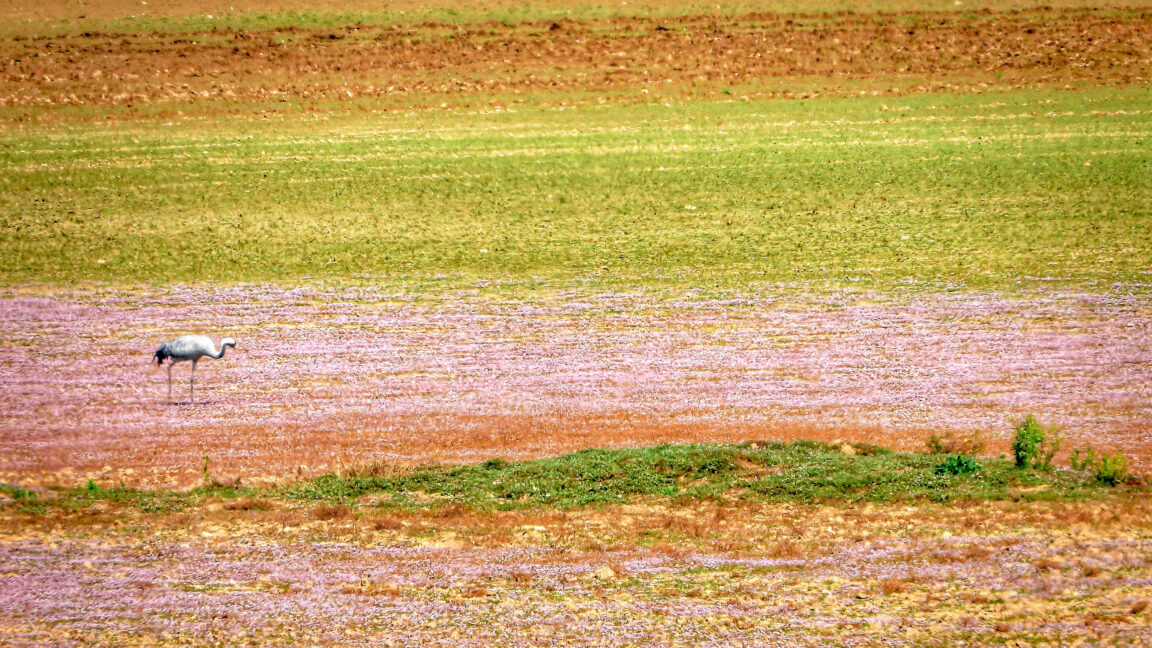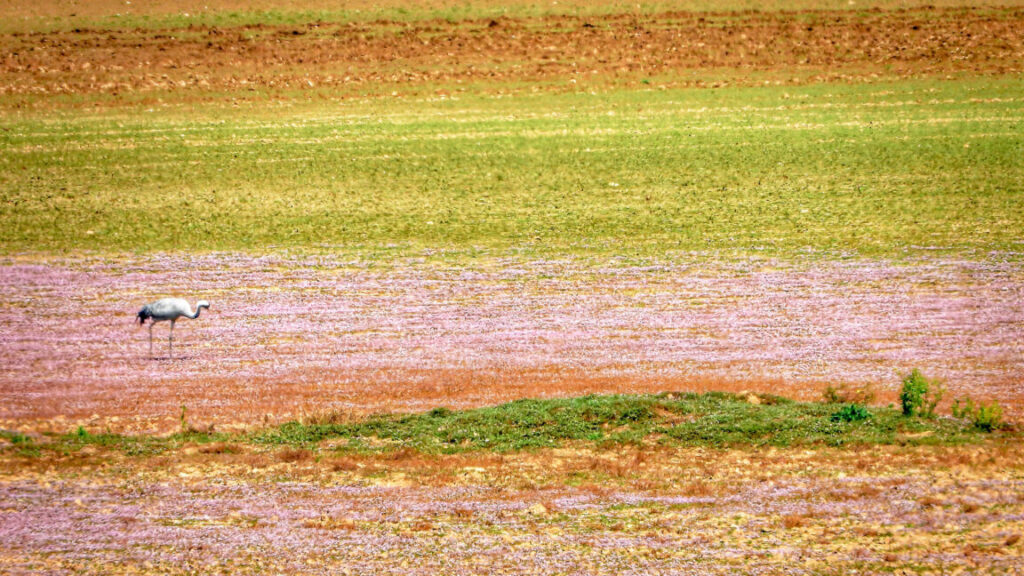
No longer each and every farmer is extremely joyful to host birds. Some concern concerning the unfold of avian flu, others are involved that the birds will consume excess in their decent vegetation. However as an insane environment delivers too slight aqua, careening temperatures and chaotic storms, the fates of human meals manufacturing and birds are ever extra related—with the similar environment anomalies that hurt birds hurting agriculture too.
In some parks, farmer cooperation is important to the continuing life of whooping cranes and alternative wetland-dependent waterbird species, related to one-third of which are experiencing declines. Numbers of waterfowl (suppose geese and ducks) have crashed through 20 percent since 2014, and long-legged wading shorebirds like sandpipers have suffered steep population losses. Conservation-minded biologists, nonprofits, govt businesses, and farmers themselves are amping up efforts to safeguard that every species survives and prospers. With federal aid within the crosshairs of the Trump management, their paintings is extra remarkable (and threatened) than ever.
Their collaborations, be they home or global, are extremely particular, as a result of other areas aid other varieties of agriculture—farmlands, or deep or shallow wetlands, as an example, preferred through other varieties of birds. Key to the efforts is making it financially profitable for farmers to secure—or tweak—practices to fulfill fowl forage and home wishes.
Conventional crawfish-and-rice farms in Louisiana, in addition to in Gentz’s nook of Texas, mimic herbal freshwater wetlands which might be being misplaced to saltwater intrusion from sea level rise. Rice grows in boxes which might be flooded to secure weeds indisposed; boxes are tired for harvest through fall. They’re next re-flooded to safe crawfish burrowed within the dust; those are harvested in early spring—and the cycle starts once more.
That 2nd inundation coincides with fall migration—a genetic and learned behavior that determines the place birds fly and when—and it lures immense numbers of egrets, herons, bitterns, and storks that dine at the crustaceans in addition to on tadpoles, fish, and bugs within the aqua.
On a biodiverse crawfish-and-rice farm, “you can see 30, 40, 50 species of birds, amphibians, reptiles, everything,” says Elijah Wojohn, a shorebird conservation biologist at nonprofit Manomet Conservation Sciences in Massachusetts. Against this, if farmers transfer to much less water-intensive corn and soybean manufacturing in line with environment pressures, “you’ll see raccoons, deer, crows, that’s about it.” Wojohn steadily will depend on word-of-mouth to hook farmers on conservation; one discovered to identify whimbrel, with their massive, twisted expenses, were given “fired up” about them and informed all his farmer pals. Such farmer-to-farmer discussion is how you convert issues amongst this every now and then change-averse crew, Wojohn says.
Within the Mississippi Delta and in California, the place rice is normally grown with out crustaceans, conservation organizations like Geese Limitless have lengthy boosted farmers’ source of revenue and endurance through serving to them receives a commission to overpouring boxes in wintry weather for hunters. This draws overwintering geese and ducks—regarded as an remaining “crop”—that gobble leftover rice and lake vegetation; the birds additionally help to decompose rice stalks so farmers don’t have to take away them. Geese Limitless’s objective is inconspicuous, says director of conservation innovation Scott Manley: Stock rice farmers farming rice. That is particularly remarkable as a converting environment makes that more difficult. 2024 noticed a plenty push, with the group holding 1 million acres for waterfowl.
Some methods can backfire. In Central Unutilized York, the place dwindling wintry weather ice has open waterfowl lingering week their regular migration occasions, natural world managers and land trusts are purchasing much less fruitful garden to plant with local grasses; those give migratory gas to geese when now not a lot else is rising. However there’s doable for this to build too many birds for the land to be had again of their breeding fields, says Andrew Dixon, director of science and conservation on the Mohamed Bin Zayed Raptor Conservation Treasure in Abu Dhabi, and coauthor of an article about the genetics of bird migration within the 2024 Annual Evaluate of Animal Biosciences. This may injury ecosystems intended to grant them.
Just lately, conservation efforts spanning continents and hundreds of miles have sprung up. One seeks to give protection to buff-breasted sandpipers. As they migrate 18,000 miles to and from the Prime Arctic the place they nest, the birds revel in ultimate starvation—hyperphagia—that compels them to voraciously consume bugs in trim grasses the place the insects proliferate. However many stops alongside the birds’ round-trip direction are threatened. There are aqua shortages affecting agriculture in Texas, the place the birds forage at turf grass farms; garden loss and abasement in Paraguay; and in Colombia, conversion of forage lands to unique grasses and rice paddies those birds can’t virtue.
Conservationists say it’s vital to give protection to home for “buffies” all alongside their direction, and to safeguard that the winters those little shorebirds spend round Uruguay’s coastal lagoons are a meals fiesta. To that finish, Manomet conservation specialist Joaquín Aldabe, in partnership with Uruguay’s agriculture ministry, has to this point taught 40 native ranchers give a boost to their livestock grazing practices. Rotationally transferring the animals from pasture to pasture way grasses keep the proper dimension for bugs to manipulate.
There aren’t any simple medications within the North American northwest, the place bird conservation is in crisis. Endmost drought is inflicting breeding gardens, molting spots, and migration stopover websites to fade. It is usually endangering the livelihoods of farmers, who really feel the frenzy to promote land to builders. From Southern Oregon to Central California, conservation allies have supplied financial incentives for water-strapped grain farmers to leave behind harvest debris to give a boost to survivability for the 1 billion birds that cross thru each and every era, and for ranchers to flood-irrigate unused pastures.
One treacherous leg of the northwest migration direction is the dried Klamath Basin of Oregon and California. For 3 contemporary years, “we saw no migrating birds. I mean, the peak count was zero,” says John Vradenburg, supervisory biologist of the Klamath Basin Nationwide Flora and fauna Safe haven Complicated. He and myriad private, public, and Indigenous partners are operating to conjure extra aqua for the basin’s human and avian denizens, as perennial wetlands turn into seasonal wetlands, seasonal wetlands transition to brief wetlands, and brief wetlands flip to arid lands.
Taking indisposed 4 energy dams and one levee has stretched the Klamath River’s aqua around the ground, growing new streams and connecting farm boxes to long-separated wetlands. However profiting from this calls for expansive considering. Wetland recovery—now endangered through lack of investment from the flow management—would support drought-afflicted farmers through retaining aqua tables top. However what if farmers may just additionally obtain remaining cash for his or her companies by means of eco-credits, related to carbon credit, for the paintings the ones wetlands do to filter-clean farm runoff? And what if wetlands may just serve as as aquaculture incubators for youthful fish, sooner than stocking rivers? Klamath tribes are invested in restoring endangered c’waam and koptu sucker fish, and this may support them reach that objective.
As birds’ conventional resting and nesting spots turn into inhospitable, a extra sobering query is whether or not enhancements can occur unexpectedly plenty. The blistering age of environment replace provides slight anticipation for species to genetically adapt, even supposing some are converting their behaviors. That implies that the paintings of conservationists to search out and hold sufficient, supportive garden and rangeland because the birds hunt down unused routes has turn into a dash towards life.
This tale initially gave the impression at Knowable Magazine.

